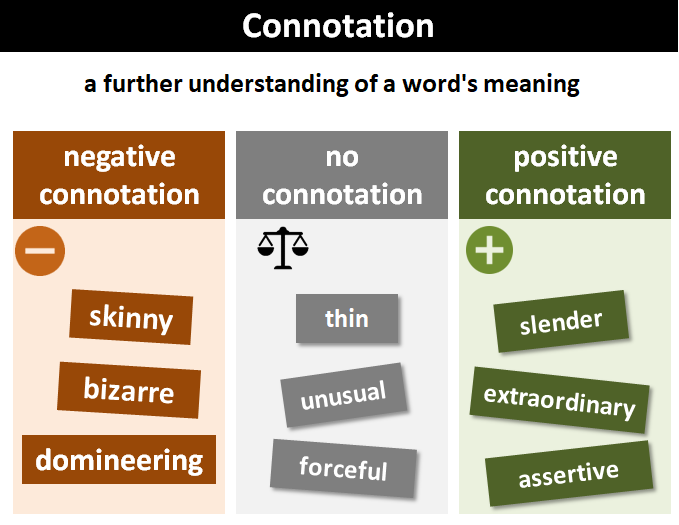Chapter 15-Word Connotation
Mark Twain once said, “The difference between the right word and the almost right word is the difference between lightning and a lightning bug.” Basically, what he meant was, your words matter!
Take a look at some of these pictures below. Can you identify the issue in each of them?




When we use the wrong word when writing, it can sometimes cause a chuckle, but at times using the wrong word can also be embarrassing or even offensive.
In this chapter, we will take a brief glimpse at word choice. This chapter is in no way designed to teach you all you need to know about word choice. You’d need a complete class on vocabulary for that! Instead, the purpose is to highlight different techniques for choosing the correct words.
Connotation and Denotation
“Connotation is simply the emotional feeling we get from words, signs, and objects. Denotation is the textbook definition of words. There’s no such thing as “positive” or “negative” denotations – but there are negative and positive connotations (Heckmann).
Dictionaries are helpful for sharing the literal meaning of words, but they don’t necessarily tell the reader the emotional or historical root of the word (connotation). It’s important to be aware that just a connection exists; otherwise, you may unintentionally use a word with a negative connotation when you don’t mean to.
One example is with the word skinny. Most people don’t want to be called skinny because it brings to mind someone who is frail or bony. However, the words slender or thin have a positive connotation that focuses more on someone who is fit or healthy.

Use connotation to influence your readers.
As a writer, you can influence your readers’ opinions with the words you choose. Writers frequently show their bias through their word choice.
Use connotation to write concisely and precisely.
The best writing is concise and clear. Writers can do this by choosing words that have the correct connotation.
Example:
The boy looked at the people.
The boy glared at the people.
The later example shows that the boy is angry at the people he is looking it. He paints a much more descriptive picture than the first sentence.
Chapter Exercise
Look at the words below. Label them as positive or negative.
• refreshing – chilly
• plain – natural
• clever – sly
• cackle – giggle
• snobby – cultured
• cop – officer
• skinny – slender
• statesman – politician
• smile – smirk
• domineering – assertive
Additionally, Reader’s Digest developed a list of 70 words or phrases that are commonly used or said wrong–this applies to native speakers, too! Check out the list to make sure you are using these words correctly.
